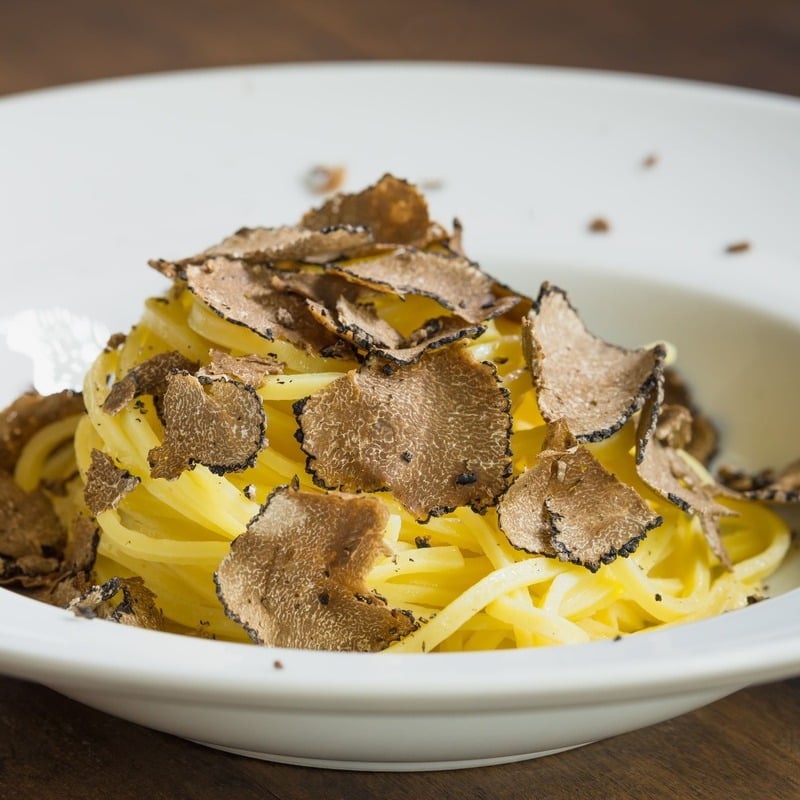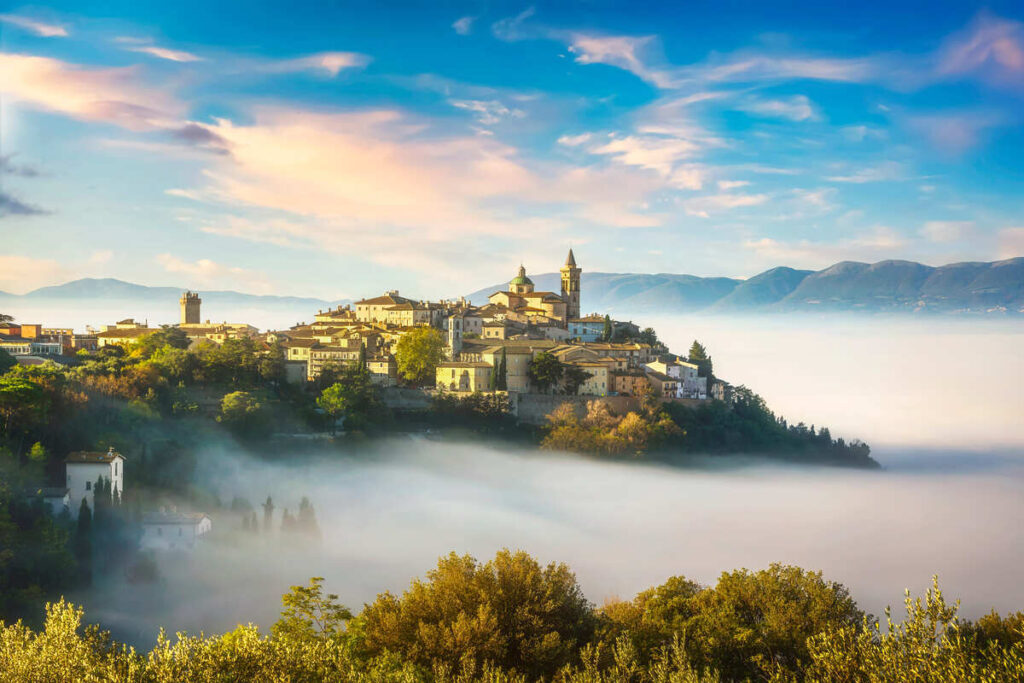Travel Guide
Fairytale Towns And Dramatic Nature: Americans Have Yet To Discover This Stunning Region Of Italy
Last Updated
Home to world-renowned landmarks like the Colosseum, the Leaning Tower of Pisa and the Milan Duomo, not to mention the incredible cuisine and culture, Italy is perhaps the most dreamed-of destination for American travelers crossing the pond.

It may seem as if no stone has been left unturned here—Italy is one of the most coveted destinations globally—but the sad reality is that a majority of visitors will flock into two or three regions, contributing to surging prices and crowds, and just completely ignore most of the country.
Rome is an ancient wonder, we doubt there’s a more romantic city than floating Venice, and don’t get us started on gorgeous Amalfi, but how about we all stop sleeping on Umbria?
Italy’s Forgotten Central Province

Tuscany is famous for its expansive plains traversed by cypress-lined winding roads, and even unacquainted travelers would instantly associate Campania with rugged coastal drives, especially around Amalfi, or Lombardy with lake-dotted reserves and alpine peaks.
For most foreigners, however, Umbria remains an absolute mystery, even though it borders Tuscany, itself a major tourism hotspot, and Lazio, where Rome is located, and that’s what we’re hoping to address here: what’s it known for? What’s the landscape like? How’s the food?

And most importantly, seeing it’s been ignored for so long, is it even worth a visit?
Majestic Nature
In stark contrast with Switzerland or Norway, Italy is not one of those European destinations you would primarily visit for nature, but one thing you should know about Umbria in particular, is that it is not called Italy’s ‘green heart’ for no apparent reason.
Its hilly terrain is covered in dense forests and national parks, where you’re sure to find natural springs, breathtakingly beautiful gorges you’ll have a hard time believing are in Italy, not Arizona, and spectacular waterfalls.

A short hike away from the city of Terni, you’ll reach the plunging Marmote Waterfalls, one of the often-overlooked natural wonders of Italy, while elsewhere in Piediluco, it’s a serene lake that awaits, fringed by sleepy pastel villages and historic castles.
If you’re looking for some relaxation, Clitunno Springs in the place to go: if you’re feeling overwhelmed by Italy’s boundless cultural wealth, fresh off a two-week cultural city streak, you can recharge your batteries in a rustic boutique hotel, breathe in the nature and swim in crystal-clear ponds.
More Of Italy’s Fascinating Ancient Culture

Unlike other densely-populated Italian regions, Umbria has a population of 882,000 people, distributed around quaint comuni, and with a couple of exceptions in Perugia and Terni, the largest urban centers, no town has over 100,000 inhabitants.
As it’s the capital, Perugia is the main attraction, surrounded by defensive walls and littered with historical monuments, including the 13th-century Priori Palace, a frescoed Gothic cathedral, and an ornate marble fountain (Fontana Maggiore) with biblical carvings.

Though it’s the main town, there’s more to Umbria than just Perugia: Assisi is the birthplace of St. Francis, and thus an important pilgrimage site, and medieval gems Orvieto, Gubbio, Città di Castello, Spello all boast postcard-ready streets and preserved buildings.
There are countless more gorgeous, picturesque fairytale towns to discover, with hilltop locations, cobblestones, traditional restaurants and all the rest, and trust us, it only takes a half-day drive through postcard-ready Umbria to fall in love with the place.
There Are Fewer Tourists In Umbria

Seeing that it is not coastal, and relatively out of the way of the usual tourism routes—you won’t pass through it it if you’re traveling from Florence down to Rome, or from Venice to Puglia—Umbria receives far fewer tourists than other parts of the country.
This year, around 907,000 tourists visited Umbria, two thirds being Italians: as we’ve seen already with Puglia, locals typically go where Americans and fellow Europeans are not, as they can tell inauthenticity and tourism traps a mile off, and contrary to the stranieri, they’re not big spenders.

In other words, Umbria means not only smaller crowds and more unspoiled ‘Italianness’, but also cheaper prices: hotel overnights in Perugia start from a reasonable $77 per night, breakfast included, and more shockingly even, in the peak of summer.
You’d be lucky to find centrally-located hotels in major Italian cities for under $150 a night in July, and if you’re hoping to eat well and cheap, you can do so for under $50 a day, especially smaller towns where prices reflect the local purchasing power.
Can We Talk About The Criminally-Underrated Umbrian Cuisine?

Regardless of your travel preferences and whether you’re more interested in natural or historical sites, no trip to Italy is complete without immersion in its culinary delights, and if you’re coming to Umbria, boy, you’re in for the gastronomic journey of your life.
As you might expect, Umbria cuisine is typically rural in character, and that’s why it is affectionately called cucina povera, or ‘peasant cooking’: we’re talking a ‘no waste’ approach to cooking—no part of an animal goes to waste—and traditional recipes passed down through generations.

If you’re big on meat, you’ll love their signature porchetta, a thick, herbed pork roll, the delectable norcino cured meat plate, including the gamey, Umbrian wild boar, and bistecca, T-bone steak grilled over a wood fire.
Of course, there’s plenty of pasta, a varied selection of salads with classic Mediterranean concoctions, vegetable stews and pizza: carnivore or hard-line vegan, no traveler will go hungry (or broke, for that matter) in Umbria.
How To Get To Umbria This Summer

Umbria is a rural province in the middle of Italy and it’s not like air traffic is particularly intense here, so if you’re wondering how you can get to Umbria from the United States this summer, the easiest way is to travel to Rome, a big international hub hosting Transatlantic flights.
From both cities, you can easily travel onward to Umbria: trains from the Italian capital to Perugia take only 2h42, no changes required, and tickets can cost as cheap as $16; Assisi is even easier to get to, even as a day trip only: it’s a 2-hour, $15 train from Rome.
The largest airport in the province, Umbria International Airport only hosts short-haul, intra-Europe flights from select cities, like London (Stansted), Palermo in Sicily, Barcelona (only in summer), and Tirana in Albania.
↓ Elevate Your Travel↓
Sign Up Now For Travel Off Path Premium! No ads, VIP Content, Personal Travel Concierge, Huge Savings, Daily Deals, Members Forum & More!

✈️Join Our Travel Off Path Community Forum: Where travelers unite, ask questions, share experiences and even find like-minded travel buddies!
SUBSCRIBE TO OUR LATEST POSTS
Enter your email address to subscribe to Travel Off Path’s latest breaking travel news, straight to your inbox.
This article originally appeared on TravelOffPath.com
Opinions expressed here are the author’s alone, not those of any bank, credit card issuer, hotel, airline, or other entity. This content has not been reviewed, approved or otherwise endorsed by any of the entities included within the post.

